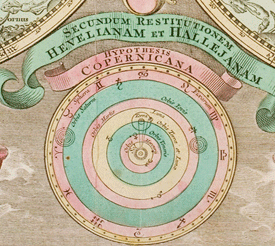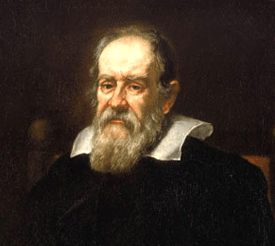The Sun
The sun is the original source of all energy
on Earth. It was the first energy source humans used. It provided
light and heat to the first humans. During the day, the people
searched for food. Once the sun went down, the world was dark
and cold. They had no home so when it began to get dark, they
looked for shelter. The moon and stars gave just a bit of
light and no warmth. People huddled together for warmth and
protection from the wild animals who hunted them at night.
In ancient times, the people believed the Sun
was a burning ball of fire created by the gods. The sun has
inspired mythological stories in cultures around the world
from the beginning of time, including those of the ancient
Egyptians, the Aztecs of Mexico, Native American tribes of
North America and Canada, the Chinese and many others.
Originally most cultures believed that the Earth
was immovable and the sun, other planets, and stars revolved
around it. In the 16th century Nicolaus Copernicus believed
another theory called Heliocentrism (Helios is Greek for the
Sun). It stated that the Sun was in the center and all spheres,
including the Earth, revolved around it.
In the 17th century Galileo Galilei studied
the Sun and its sunspots and he claimed that Copernicus was
correct about the Earth revolving around the sun. Galileo
was jailed by the Catholic Church because his claims went
against church doctrine that stated everything revolved around
the Earth. Galileo used mathematics, physics and his own Galilean
telescope to devise his theory. His theory of the Earth revolving
around the Sun has since been proven to be true.
 Nicolaus
Copernicus Heliocentric Solar System Nicolaus
Copernicus Heliocentric Solar System |
 Galileo
Galilei Galileo
Galilei |
Facts about the Sun
- The Sun is the closest star to Earth (92.96 million
miles away or 149.60 million kilometers).
- The Sun formed over four and a half billion years ago
and is a middle-aged star, meaning it is at about the
middle of its life. The Sun should keep shining for at
least another five billion years.
- The Sun�s surface has a temperature of about 10,000�
Fahrenheit. Its core, or middle, the Sun is about 27 million�
Fahrenheit.
- The Sun does not truly rise or set. It just looks like
it does because the Earth is moving.
- The Earth orbits the Sun every 365 days and 6 hours.
- The Sun rotates, too. It rotates every 25-36 days.
- The outermost region of the Sun is called the corona.
- The energy produced in the core powers the sun and produces
essentially all the heat and light we receive on Earth.
- Light from the Sun can reach the Earth in only 8 minutes.
This is called the speed of light.
Fire
In ancient times fire was not just feared by
animals it was feared by man. Lighting caused fires
Once in a while, lightning started fires. Early
humans saw the fire and were afraid. They saw the animals
run in fear.
One day they didn’t run away. Maybe they
felt the heat on a cold day or maybe they noticed they could
see at night with the fire. No one knows how it happened,
but one brave person carried a burning branch to a cave.
People put wood on the fire to keep it going.
The fire kept them warm, it gave them light and it kept dangerous
animals away. For the first time, people had a home. They
no longer slept wherever they were at the end of the day.
The hunters came home at night to their fire, to safety. The
children and the elders made sure the fire did not go out.
These early cave dwellers didn’t know how to start a
fire. If the fire went out, they had to wait until lightning
struck again. Keeping the fire going was a very important
job.
Humans had the first energy source they could
control. Later, they learned how to start fires. They rubbed
pieces of flint together to make sparks. One day, someone
dropped a piece of meat into the fire. They learned that fire
could cook food. Cooked meat tasted better and was easier
to chew. They used fire to make stronger tools. They used
fire to help them capture animals for food. They had an energy
source that could do many things for them. It did work for
them, it made life easier.
Other Energies
Eventually man learned to use many different
forms of energy to do his work including: hydro (water),
wind, steam, electricity, fossil fuels, nuclear energy. Click
to see some examples. We will learn about
these energies in the renewable
energy and nonrenewable
energy pages.
Think about it!
What would life be like if you lived like ancient
man, about a half a million years ago, and you didn't have
electricity, tools or fire.
|